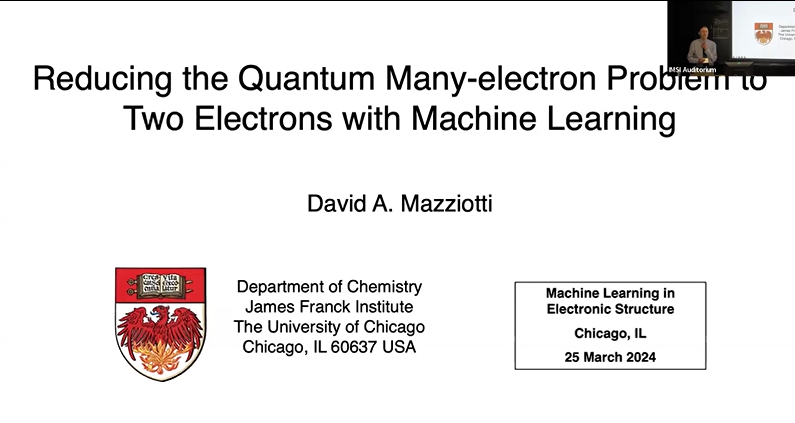Reducing the Quantum Many-Electron Problem to Two Electrons with Machine Learning
Presenter
March 25, 2024
Event: 41725
Abstract
An outstanding challenge in chemical computation is the many-electron problem where computational methodologies scale prohibitively with system size. The energy of any molecule can be expressed as a weighted sum of the energies of two-electron wave functions that are computable from only a two-electron calculation. Despite the physical elegance of this extended “aufbau” principle, the determination of the distribution of weights─geminal occupations─for general molecular systems has remained elusive. In this lecture we introduce a new paradigm for electronic structure where approximate geminal-occupation distributions are “learned” via a convolutional neural network [J. Am. Chem. Soc. 2022, 144, 41, 18959–18966]. We show that the neural network learns the N-representability conditions, constraints on the distribution for it to represent an N-electron system. By training on hydrocarbon isomers with only 2–7 carbon atoms, we are able to predict the energies for isomers of octane as well as hydrocarbons with 8–15 carbons. The results indicate that machine learning can be used to reduce the many-electron problem to an effective two-electron problem, opening new opportunities for accurately predicting electronic structure.
